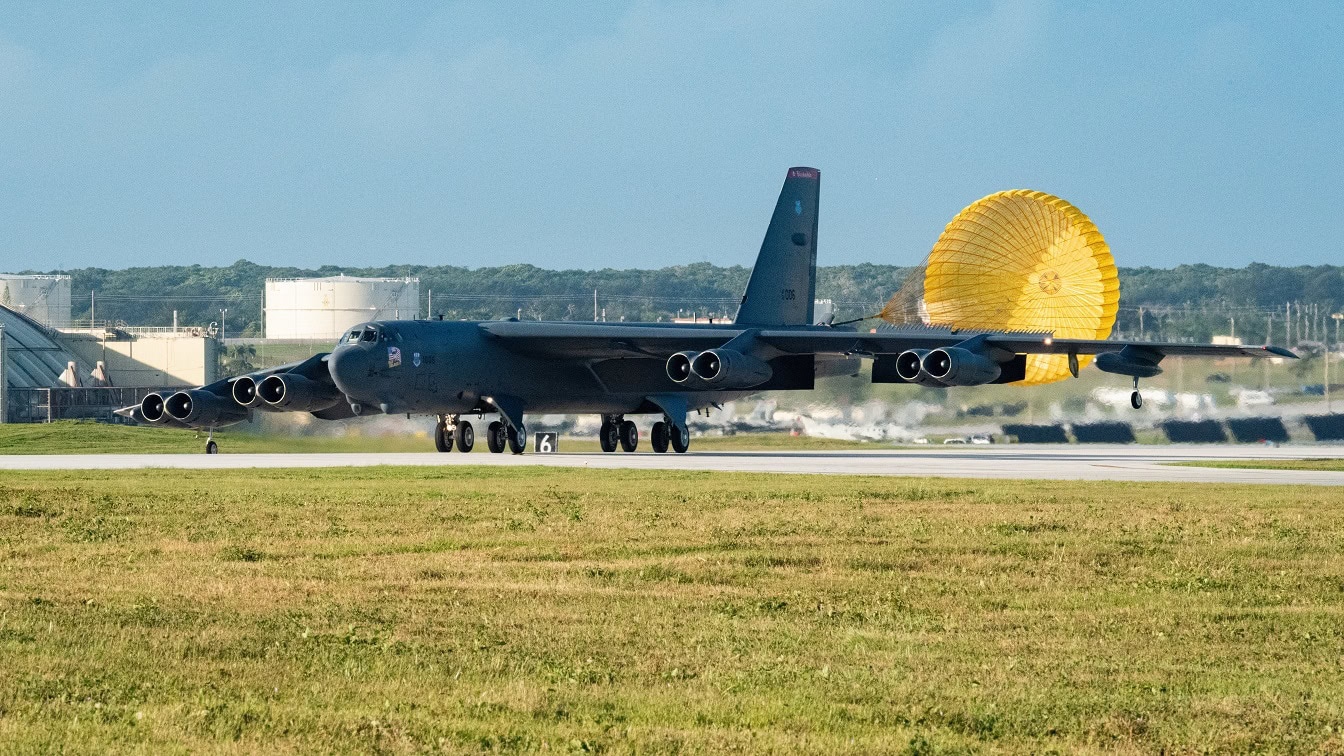How can the B-52 bomber still keep flying? As reported last month, the post-punk pop band The B-52s are currently on the road as part of their farewell tour. Even as the aging rockers are playing their final shows, the even older bomber is continuing to “Roam” around the world – with some of the United States Air Forces heavy bombers flying over the skies of Europe and the Middle East this month.
The B-52 Stratofortress may be older than the crews onboard (and possibly some of their parents), but it continues to serve as a deterrent to America’s potential adversaries. Capable of carrying conventional or nuclear weapons, the B-52 can also be armed with up to 20 cruise missiles.
A pair of B-52 bombers were deployed to Royal Air Force (RAF) Fairford, England last month as part of a bomber rotation to Europe in response to Russia’s aggressive stance, including its invasion of Ukraine earlier this year. One of those aircraft was sent to Poland earlier this month as part of a show of U.S. strength and resolve, as well as to reaffirm the close cooperation between the United States and its NATO partner.
“Polish-American cooperation is getting closer. A B-52 bomber arrived in Poland today. Our interoperability and capabilities to defend NATO’s eastern flank are growing. #StrongerTogether,” wrote Mariusz Blaszczak, Poland’s deputy prime minister/minister of National Defense, on Twitter last week.
Earlier this month, a pair of Stratofortress bombers also conducted a low-level “flyover” of the Sweden’s capital of Stockholm, passing directly over the nation’s parliament in advance of joint U.S.-Swedish military exercises, the first since the Scandinavian country joined NATO.
“It’s the kind of exercise that is even more meaningful now,” Swedish military spokesperson Therese Fagerstedt told reporters, adding that during the flight, the first over Stockholm, the two U.S. Air Force aircraft were escorted by JAS Gripen fighters.
Such training improves integration between air and land forces, as well as interoperability between partner nations, which is crucial to ensuring NATO forces can work together effectively on operations and in war, stated the U.S. European Command.
“These Bomber Task Force missions across Europe provide a great opportunity to improve our combined readiness, promote interoperability and demonstrate our global power projection alongside our Allies,” said U.S. Air Force Gen. James Hecker, USAFE-AFAFRICA and AIRCOM commander. “Our ultimate strength in the European area of operations is a joint-force lethality – our ability to train and operate with our Allies and partners as one layered, capable and credible combat team.”
B-52 Middle East Bound
In addition to logging the miles in Europe, the pair of U.S. Air Force nuclear-capable B-52s was deployed from RAF Fairford to the Middle East earlier this week in a show of show as tensions remain high between Washington and Tehran. The bombers flew over the eastern Mediterranean, the Arabian Peninsula and the Red Sea on Sunday in training missions together with Kuwaiti and Saudi warplanes, as well as U.S. ground and naval units, before departing the region.
During the flight on Sunday, the Bomber Task Force aircraft conducted theater integration training and operations with a variety of U.S. Air Force, partner, and ally aircraft, including F-15/18, RJ-135, E-3, KC-135/10/46, FGR-4, and A-330 aircraft.
“Threats to the U.S. and our partners will not go unanswered.,” Lt. Gen. Alexus Grynkewich, the top U.S. Air Force officer in the Middle East said in a statement. “Missions like this … showcase our ability to combine forces to deter and, if necessary, defeat our adversaries.”

B-52 Bomber. Image Credit: US Air Force.
B-52 Continuing to Log the Miles
First flown in April 1952 – 67 years ago – the B-52s have gone through updates and upgrades and can be further improved to address modern threats.
There are currently 58 B-52 bombers in active service, with another 18 in reserve and another dozen or so in long-term storage. The bombers have flown under various commands during those 67 years, beginning with the Strategic Air Command (SAC), until it was disestablished at the end of the Cold War in 1992 when its aircraft were absorbed into the Air Combat Command (ACC). Since 2010, all B-52 Stratofortresses fly under the Air Force Global Strike Command (AFGSC).
Those long-range, subsonic strategic bombers will also remain in service into the 2050s, with some reaching 100 years in service.
Expert Biography: A Senior Editor for 1945, Peter Suciu is a Michigan-based writer who has contributed to more than four dozen magazines, newspapers, and websites with over 3,000 published pieces over a twenty-year career in journalism. He regularly writes about military hardware, firearms history, cybersecurity, and international affairs. Peter is also a Contributing Writer for Forbes. You can follow him on Twitter: @PeterSuciu.

